How have you learnt if Fb is a worthy funding or in the event you’re getting sufficient site visitors out of your current promotional marketing campaign? The reply: UTM monitoring hyperlinks.
UTM codes aid you observe the place site visitors is coming from, permitting you to correctly measure every marketing campaign’s, platform’s, or medium’s ROI.
On this weblog publish, I’ll take you thru what UTM codes are, tips on how to use them, and tips on how to construct them in each Google Analytics and HubSpot.
Desk of Contents
What’s a UTM Code?
A UTM (Urchin Monitoring Module) code is a snippet of textual content added to the top of a URL to trace the metrics and efficiency of a selected digital advertising marketing campaign. UTM codes can include as much as 5 parameters: Marketing campaign, supply, medium, content material, and time period.
UTM codes are often known as UTM parameters — or monitoring tags — as a result of they aid you “observe” web site site visitors from its origin. Entrepreneurs customise this textual content to match the online web page on which the tagged URL is linked in an effort to attribute the success of that marketing campaign to particular items of content material.
Under is an instance of a UTM code connected to the URL of a weblog publish. (UTM code highlighted in yellow.)

Picture Supply
Now, you could be pondering, “I’ve HubSpot, so I already know if my web site site visitors is coming from Google, e-mail, social media, and comparable advertising channels. What does a UTM code inform me that I do not already know?”
Whereas HubSpot Advertising Hub offers you with these high-level sources of site visitors, UTM helps you drill down into particular pages and posts inside these site visitors sources.
In case you’re selling a marketing campaign on social media, for instance, you may know the way a lot site visitors comes from social media. Constructing a UTM code, nonetheless, can inform you how a lot of that site visitors got here from Fb or perhaps a specific publish on Fb.
Let me clarify in-depth what a UTM code is with an instance. This is a URL with its personal UTM code:
http://weblog.hubspot.com/9-reasons-you-cant-resist-list?utm_campaign=blog_post &utm_medium=social&utm_source=fb
Let’s break this hyperlink down.
- http://weblog.hubspot.com/9-reasons-you-cant-resist-list: That is the bottom URL of the web page.
- ?: This alerts to your analytics software program {that a} string of UTM parameters will observe.
- utm_campaign=blog_post: That is the primary UTM parameter, particularly for the marketing campaign the customer engaged with (on this case, a weblog publish marketing campaign).
- &: This denotes that one other UTM parameter will observe.
- utm_medium=social: That is the second parameter, particularly for the channel the customer got here from (on this case, social).
- utm_source=fb: That is the final parameter, particularly for the web site the customer got here from (on this case, Fb).
Within the instance above, you are saying that when site visitors is available in from individuals who click on this hyperlink, the site visitors must be attributed to Fb. The “medium” is social media, whereas the “supply” is Fb.
Including these snippets of code after the query mark above does not have an effect on something on the web page — it simply lets your analytics program know that somebody arrived by way of a sure supply inside an total advertising channel as a part of a selected marketing campaign.
Now, let’s take a more in-depth have a look at the definition of UTM monitoring and talk about the above-mentioned UTM parameters intimately.
What’s UTM monitoring?
UTM monitoring entails including a UTM code, a snippet of code, to the top of a URL in an effort to observe the efficiency of your advertising campaigns and content material in addition to your web site’s site visitors sources.
Totally different UTM Parameters
Listed here are the 5 issues you may observe with UTM codes and why you may observe them.
1. Marketing campaign
Marketing campaign-based monitoring tags group all of the content material from one marketing campaign in your analytics. The instance UTM code beneath would aid you attribute web site site visitors to hyperlinks that had been positioned as part of a 20% low cost promotion you are internet hosting.
Instance: utm_campaign=20_off
2. Supply
A source-based URL parameter can inform you which web site is sending you site visitors. You might add the instance code beneath to each hyperlink you publish to your Fb web page, serving to you observe all site visitors that comes from Fb.
Instance: utm_source=fb
3. Medium
Such a monitoring tag informs you of the medium that your tracked hyperlink is featured in. You should utilize the instance UTM code beneath to trace all site visitors that comes from social media (versus different mediums, like e-mail).
Instance: utm_medium=social_media
4. Piece of Content material
Such a UTM code is used to trace the precise kinds of content material that time to the identical vacation spot from a standard supply and medium.
It is typically utilized in pay-per-click (PPC) campaigns or with two similar hyperlinks on the identical web page, as proven within the pattern UTM code beneath.
Instance: utm_content=sidebar_link or utm_content=header_link
5. Time period
A term- or keyword-based monitoring code identifies the key phrases you have paid for in a PPC advert. In case you pay for a Google Advertisements marketing campaign to rank beneath the key phrase “advertising software program,” you may add the next UTM code to the top of the hyperlink you undergo Google to run this advert.
Instance: utm_term=advertising+software program
The very best half about UTM parameters is that you could make any mixture you want of those codes — use the naked minimal (marketing campaign, supply, and medium) to trace all your hyperlinks, or use all of them to get tremendous particular about your monitoring.
UTM monitoring codes can mainly aid you decide:
- The place the site visitors is coming from: Supply.
- Which common channel the site visitors come from: Medium.
- What sort of content material individuals click on on: Content material.
- Which time period they use to entry the web page: Time period.
Advantages of UTM Codes
Essential elements of being an awesome marketer are having the ability to measure your campaigns’ success and influence. Right here is how constructing UTM codes will help you try this:
- Higher monitoring. UTM codes mean you can observe precisely the place your web site site visitors is coming from, so you may see which advertising ways are literally driving outcomes. With UTM codes, you may see which sources, mediums, and campaigns are bringing in essentially the most site visitors, leads, and gross sales.
- Extra correct attribution. UTM codes additionally mean you can give credit score the place credit score is due. For instance, if a customer first finds your web site by way of a Google search after which comes again later by way of a Fb advert, you may see the complete buyer journey and attribute the sale or conversion to each channels.
Okay, so that you’re on board with UTM codes and their advantages… however how on earth do you set them up? Effectively, let me clarify.
Under are directions for establishing and measuring UTM parameters in Google Analytics and HubSpot.
The way to Construct UTM Codes in Google Analytics
Listed here are the steps concerned in constructing UTM codes in Google Analytics.
1. Open Google’s Marketing campaign URL Builder.
There are three various kinds of monitoring tags you may create in Google, two of which aid you observe site visitors to new apps on app marketplaces. You will be utilizing the Google Analytics Marketing campaign URL Builder — the third possibility on this listing.
2. Fill in every hyperlink attribute within the following kind.
Go to the web page linked above and click on the hyperlink to see this URL builder. Then, you may see the UTM builder proven beneath. Add the URL, Marketing campaign, Supply, and Medium info into their respective bins.
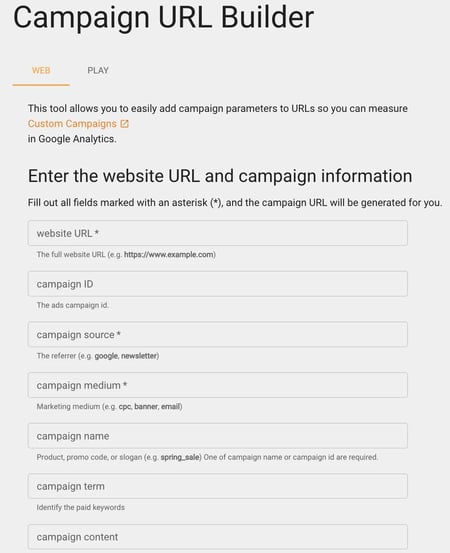
3. Use the hyperlink in your advertising marketing campaign.
If you would like to shorten it, you may want a software like bit.ly … or simply use HubSpot’s URL Builder in the event you’re a HubSpot buyer.
4. Measure your success.
If you have already got Google Analytics arrange on your website, Google will routinely observe incoming campaigns. Like in HubSpot, you may entry them beneath “Viewers,” then “Sources,” then “Campaigns.” Click on on every marketing campaign to view the supply and medium.
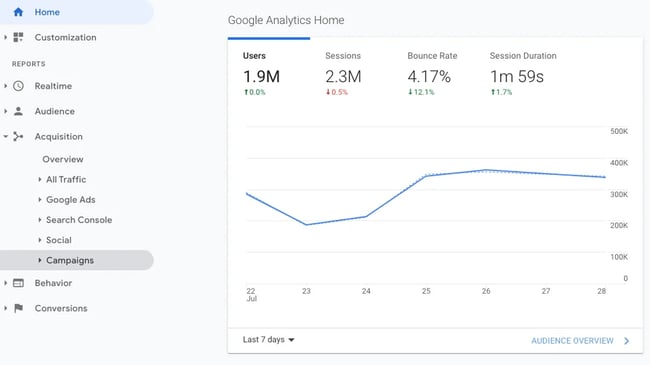
And that is it — you may have customized monitoring codes arrange and operating very quickly! In a number of weeks, you’ll make a case for what you want since you’ll have the suitable metrics obtainable.
The way to Construct UTM Codes in HubSpot
Now, let’s examine how one can construct UTM codes in HubSpot. I personally favor Hubspot over Google Analytics because it gives vivid options to trace your UTM codes.
1. Navigate to your Analytics Instruments.
In your Advertising Hub dashboard, choose “Stories” on the highest navigation bar. Then choose “Analytics Instruments” within the dropdown, as proven beneath.
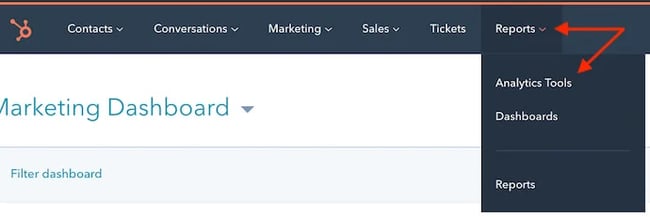
2. Open the Monitoring URL Builder.
Within the menu of analytics instruments that seems, look to the very backside proper nook. You will see the choice “Monitoring URL Builder.” Click on this selection on the backside of the web page, as proven within the pink field beneath.

3. Open the Monitoring URL kind to create a brand new UTM code.
Everytime you create an online marketing campaign that features no less than one UTM code, you may see this marketing campaign listed on the web page proven beneath.
This web page outlines a monitoring tag’s supply, medium, time period, content material, and creation date, which you’ll be able to see alongside the underside of the screenshot beneath. Click on “Create Monitoring URL” within the prime proper nook.
![]()
4. Fill in every attribute of your UTM code and click on “Create.”
Within the kind that seems, fill within the URL, Marketing campaign, Supply, and Medium fields. If you would like so as to add Content material and Time period, you are able to do so within the backside two fields of this manner. Once you’re achieved, you may see an orange “Create” button grow to be obtainable on the backside.
Click on it, and HubSpot will log your UTM code as a brand new marketing campaign. This hyperlink shall be prepared to make use of on any internet web page from which you wish to observe the site visitors.
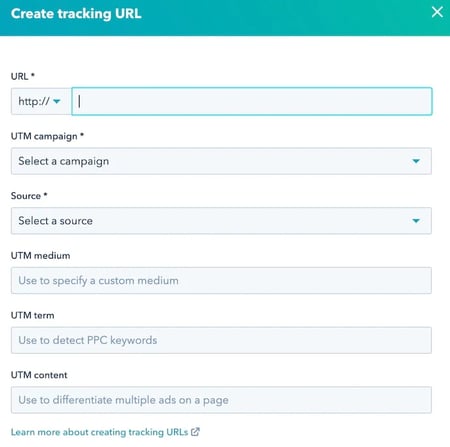 5. Use the shortened hyperlink in your advertising marketing campaign.
5. Use the shortened hyperlink in your advertising marketing campaign.
HubSpot routinely generates a shortened URL, which is best to make use of when selling your tracked content material.
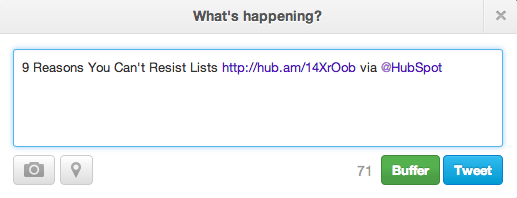
6. Measure your success.
You may observe your UTM parameters in your Site visitors Analytics dashboard beneath “Different Campaigns,” as proven beneath. Click on on the person marketing campaign to interrupt down the supply and medium.
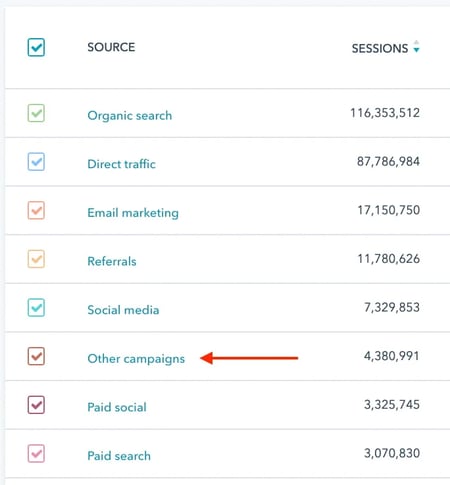
As you may see within the second picture (beneath), the identify of the marketing campaign seems to the left — based mostly on the textual content within the UTM code you created — with the site visitors from individuals who used every URL to reach at your marketing campaign’s important internet web page.
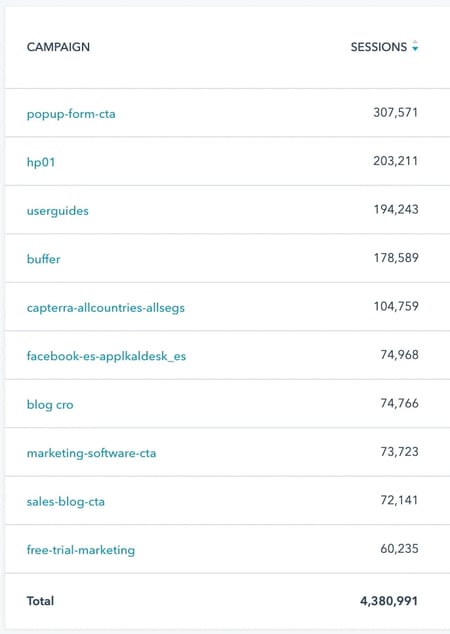
Now that you know the way to arrange UTM hyperlinks, how do you utilize them? Let’s have a look.
The way to Use UTM Hyperlinks for Your Campaigns
You should utilize a mix of UTM codes and parameters in numerous methods. Right here’s how you need to use them in your day-to-day as a marketer.
1. Monitor the success of a promotional marketing campaign.
Dropping product costs or launching a brand new product might be daunting. Plus, if there’s no measurable ROI, it’ll be a wasted effort. Fortunately, you may inform whether or not customers are successfully arriving at your website out of your promotional efforts utilizing UTM codes.
Right here’s one instance for a product launch:
mywebsite.com/new-product?utm_campaign=product_launch&utm_medium=cpc&utm_source=fb
Or, in the event you’re operating a reduction marketing campaign by way of Instagram influencers, right here’s what a UTM hyperlink can appear to be:
mywebsite.com/sale?utm_campaign=20_off&utm_medium=paid&utm_source=instagram&utm_content=bio
2. See how nicely your social channels promote your content material versus when your followers promote your content material.
How do your natural social efforts stack up in opposition to your followers’ promotional efforts? You may create two UTM campaigns to search out out.
In your personal posts, you may share a hyperlink as follows:
mywebsite.com?utm_campaign=inhouse_social&utm_medium=social&utm_source=fb&utm_content=publish
Then, immediate your followers to share the phrase about you, however allow them to share the next hyperlink:
mywebsite.com?utm_campaign=followers&utm_medium=social&utm_source=fb&utm_content=publish
3. Measure the effectiveness of visitor posting referral site visitors.
In case you’re visitor posting on a number of business web sites like me, it’s important to know whether or not these posts are driving site visitors to your website.
Everytime you create a visitor publish for one more writer, guarantee all of the hyperlinks pointing to your web site on that publish have UTM parameters that inform you the place the site visitors got here from. Right here’s one instance:
mywebsite.com?utm_campaign=guest_post&utm_medium=paid&utm_source=guest_post_site&utm_content=physique
4. Monitor the identical piece of content material throughout a number of advertising channels.
In my expertise, that is most likely one of the vital helpful methods to make use of UTM monitoring codes: Creating totally different ones for a similar piece of content material, and utilizing it throughout totally different platforms. You may drop the marketing campaign parameter for this use case and easily observe the medium, supply, and content material.
Let’s say you wish to observe referral site visitors from a video you posted on LinkedIn, YouTube, and Fb. Listed here are the three totally different hyperlinks you could possibly use:
- LinkedIn: mywebsite.com/my-content?utm_medium=social&utm_source=linkedin&utm_content=caption
- YouTube: mywebsite.com/my-content?utm_medium=social&utm_source=youtube&utm_content=description
- Fb: mywebsite.com/my-content?utm_medium=social&utm_source=fb&utm_content=caption
5. See the place most individuals click on in your inner hyperlinks in a weblog publish.
As an search engine optimization content material author, realizing if the inner linking technique is working as meant is essential. Including UTM parameters helps me observe the place my content material will get essentially the most clicks. Listed here are three examples:
- Picture: mywebsite.com/my-content?utm_source=weblog&utm_content=picture
- Above the Fold: mywebsite.com/my-content?utm_source=weblog&utm_content=above_the_fold
- Backside of the Publish: mywebsite.com/my-content?utm_source=weblog&utm_content=backside
Notice: I counsel you to make use of this technique with warning, as utilizing too many UTM parameters in inner hyperlinks may cause confusion to Google. You must apply it to a small batch of inner hyperlinks, gather the click patterns, delete the UTM hyperlinks, after which act on these outcomes on your future inner linking efforts.
As all the time, make sure that you’ve set a canonical URL for every hyperlink to reduce confusion and stop duplicate indexing.
UTM Monitoring Finest Practices
UTM monitoring URLs are a robust advertising software, however to get essentially the most out of them, it is essential to observe some finest practices. Listed here are a number of suggestions to bear in mind.
1. Create constant UTM monitoring codes.
Make certain your URLs and hyperlinks are constant, clear, and straightforward to learn. I’d even advocate creating a normal for hyperlink tagging, or a UTM parameter information (form of like a model fashion information) to make sure consistency throughout platforms and campaigns.
For instance, for month-to-month newsletters, you may select to all the time enter the “utm_medium=e-mail” within the medium parameter and use the “utm_campaign=monthly_newsletters” within the marketing campaign parameter.
Then, for all Fb posts, you’d all the time use “utm_medium=social” within the medium parameter and “utm_source=fb” within the supply parameter.
Through the use of the identical UTM parameters for comparable campaigns, you may make sure that all knowledge is correct and straightforward to investigate when it’s time to calculate your ROI and put collectively advertising studies. This lets you make data-driven choices about which campaigns are simplest.
2. Capitalize your UTM codes fastidiously, or in no way.
UTM codes are case-sensitive, so stick to both all lowercase or uppercase. Lowercase is less complicated to recollect. That manner, you don’t have to wonder if solely the primary letter or the entire parameter is capitalized.
By sticking to constant capitalization, you’ll keep away from annoying discrepancies in your web site analytics. Inconsistent capitalization can create duplicate entries or cut up knowledge throughout totally different channels, making your knowledge tough to investigate.
3. Maintain names brief however descriptive.
When creating UTM parameters, make the names brief however descriptive. This can make your UTM codes simpler to learn and bear in mind. They can even take up much less area in weblog posts and social media updates, in the end making the hyperlinks look clear, engaging, {and professional}.
Nonetheless, a very powerful profit is that you could keep away from any confusion or mix-ups between campaigns with comparable names. Clear and concise UTM codes could make it simpler to distinguish between comparable campaigns, which is very vital in case your crew runs a big quantity.
For example, to illustrate you are launching a brand new book as a part of an e-mail advertising marketing campaign. A brief however descriptive UTM code for this marketing campaign may appear to be this:
https://www.yourwebsite.com/ebook-title?utm_source=e-mail&utm_medium=e-mail&utm_campaign=ebook-launch
4. Maintain a operating listing of your UTM hyperlinks in an accessible location.
Creating yet one more spreadsheet might make you cringe, however searching down all kinds of UTM-tracked hyperlinks is what’s positive to provide you a headache. Maintain an inventory of your UTM hyperlinks so everybody in your crew is aware of which tagged hyperlinks presently exist.
Having a operating listing can even forestall your crew from creating duplicate UTM codes for a similar marketing campaign, which might skew your analytics knowledge and create pointless confusion. With a operating listing, everybody in your crew may have a simple reference level to make sure they’re utilizing the right UTM codes for brand new campaigns.
5. Join UTM monitoring codes to your CRM or advertising software.
Including your UTM monitoring URLs to your CRM or advertising software is important. (In case you’re undecided of what that may appear to be, right here’s an instance of tips on how to do it in HubSpot.) By doing so, you’ll be capable to higher perceive the client journey, precisely attribute gross sales and conversions, and make choices based mostly on knowledge.
Begin Creating UTM Monitoring URLs
Use the steps, finest practices, and instruments above to begin creating and utilizing UTM monitoring URLs so that you’re in a position to observe the efficiency of your advertising campaigns and content material. That manner, you may reliably increase your metrics and enhance the ROI of your digital advertising technique.
Editor’s observe: This publish was initially revealed in September 2013 and has been up to date for comprehensiveness.



